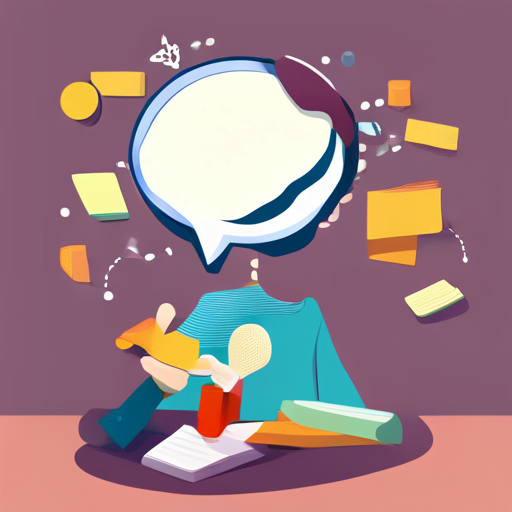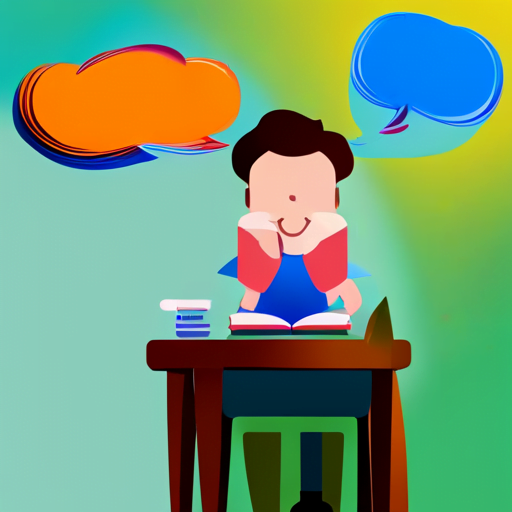Are you struggling to understand and analyze the text you read? Guided reading strategies can help you improve your reading comprehension and critical thinking skills. By implementing pre-reading, during-reading, and post-reading strategies, you can train your brain to actively engage with the text and make meaningful connections.
Guided reading strategies provide a framework for understanding and analyzing text. They are especially useful for students, but anyone can benefit from using them. Whether you are reading for pleasure or for work, these strategies can help you get the most out of what you read.
In this article, we will explore the purpose of guided reading strategies and provide tips for implementing them effectively.
Table of Contents
Understand the Purpose of Guided Reading Strategies

Let’s dive into why understanding the purpose of guided reading strategies is so important for improving your reading skills. These techniques are designed to help you become a better reader by teaching your brain to analyze the text more effectively. When you understand the purpose of these strategies, you can use them to your advantage and make the most out of your reading experience.
One of the main purposes of guided reading strategies is to help you comprehend the text better. By breaking down the text into smaller, more manageable chunks, you can focus on understanding the meaning of each sentence and how it relates to the rest of the passage. This can also help you identify important information and key ideas, which can be useful when you need to recall the information later on.
Another important purpose of guided reading strategies is to help you develop critical thinking skills. By asking questions, making predictions, and drawing connections between different parts of the text, you can learn to analyze the text more deeply and draw conclusions based on the evidence presented in the passage. This can help you become a more active reader and engage with the text in a more meaningful way.
In conclusion, understanding the purpose of guided reading strategies is essential for improving your reading skills. By using these techniques to improve your comprehension and critical thinking skills, you can become a more effective reader and get more out of your reading experience. So next time you sit down with a book or article, remember to use these strategies to your advantage and see how they can help you become a better reader.
Utilize Pre-reading Strategies

Before diving into a book, it’s helpful to use pre-reading techniques. These can include scanning and skimming the text to get a sense of what’s to come. Scanning involves quickly looking through the text for keywords and phrases, while skimming involves reading the first and last sentences of each paragraph.
Activating your prior knowledge about the topic is another pre-reading strategy that can be helpful. This means thinking about what you already know about the subject matter and making connections between that knowledge and what you are about to read. Doing this can help you better understand the text and retain information more effectively.
Previewing the text can also be a helpful pre-reading strategy. This involves looking at the headings, subheadings, and any bold or italicized words in the text. By doing this, you can get a better sense of the main ideas and topics that will be covered in the text. Previewing the text can also help you focus your reading and identify key information more easily.
Implement During-Reading Strategies

As you read, take advantage of techniques to stay engaged and absorb information more effectively. One strategy is to ask yourself questions as you go along. This helps you stay focused on the text and actively seek out answers.
For example, you might ask, “What’s the author’s main point here?” or “What evidence supports this claim?” By doing this, you’re training your brain to analyze the text and stay on track.
Another technique is to visualize what you’re reading. This means creating mental images of what the text is describing. For example, if you’re reading about a character walking through a forest, try to imagine the trees, the sounds of the birds, and the feeling of the cool air. This helps you connect to the text and remember it better. Visualization is especially helpful for visual learners, but it can benefit anyone.
Finally, take advantage of any annotations or notes you’ve made during the pre-reading stage. This can include highlighting key phrases or writing down questions you have. As you read, refer back to these notes and use them to guide your understanding. This helps you stay organized and focused on the important information.
By implementing during-reading strategies like these, you can train your brain to analyze text more effectively and improve your overall reading comprehension.
Incorporate Post-Reading Strategies

After finishing a reading, you can enhance your understanding by reflecting on the main ideas and making connections to your own experiences and knowledge. This is where post-reading strategies come in.
One effective strategy is summarizing the text in your own words. This helps you internalize the information and identify the most important points. You can also create a mind map or a graphic organizer to visually represent the main ideas and how they relate to each other.
Another post-reading strategy is asking questions. This helps you clarify any confusion and deepen your understanding. You can ask questions about the main ideas, the author’s purpose, the tone, and the implications of the text. You can also compare and contrast the text with other sources you’ve read or your own experiences. This allows you to make connections and see the bigger picture.
Lastly, it’s important to reflect on how the reading has impacted you. This can be done through journaling, discussion, or simply taking a moment to think about your thoughts and feelings. By doing this, you not only solidify your understanding of the text, but you also gain insight into yourself and your own perspectives.
Post-reading strategies are essential for effective reading comprehension and critical thinking. So, the next time you finish a reading, take some time to reflect, question, and connect.
Frequently Asked Questions
How can guided reading strategies be adapted for students with different learning needs or abilities?
Are you struggling to find ways to adapt guided reading strategies for students with different learning needs or abilities?
One way to do this is by providing differentiated instruction that caters to each student’s unique learning style. For example, students who struggle with reading comprehension could benefit from visual aids or graphic organizers that help them better understand the text.
Meanwhile, students who are more advanced readers could be challenged with higher level questions and more complex texts that push them to think critically and apply their knowledge in new ways.
By tailoring your approach to each student’s individual needs, you can help them develop the skills they need to become confident, successful readers.
Are there any specific texts or genres that are better suited for guided reading strategies?
If you’re looking for texts or genres that are particularly well-suited for guided reading strategies, there are a few things to keep in mind.
First, you’ll want to choose texts that are appropriate for your students’ reading levels. This will ensure that they are able to engage with the text and apply the strategies you are teaching them.
Additionally, texts that are rich in vocabulary and have complex sentence structures can be particularly effective for guided reading.
Finally, you may want to choose texts that are relevant to your students’ interests or experiences, as this can help to increase their engagement and motivation.
Ultimately, the best texts for guided reading will depend on your students’ needs and abilities, as well as your instructional goals.
How can teachers assess the effectiveness of their guided reading instruction?
To assess the effectiveness of your guided reading instruction, start by setting clear learning objectives for each session. Before each lesson, make sure you’ve chosen texts that are appropriate for your students’ reading levels and that will challenge them appropriately.
During the lesson, observe your students closely, taking note of their engagement, comprehension, and participation. Use informal assessments like questioning and monitoring to gauge understanding.
After the lesson, reflect on what went well and what could be improved. Consider using more formal assessments like reading comprehension tests to measure progress over time.
By closely monitoring your students’ progress and adjusting your instruction as needed, you can ensure that your guided reading strategies are helping your students develop the skills they need to analyze and comprehend text.
Can guided reading strategies be used in conjunction with other instructional approaches, such as group work or independent reading?
If you’re wondering whether guided reading strategies can be used alongside other instructional approaches, the answer is yes!
Group work and independent reading can both be great complements to guided reading. In fact, integrating these approaches can help students develop a more well-rounded set of skills and strategies that will serve them well in all aspects of their academic lives.
Just be sure to choose approaches that are well-suited to the goals you have for your students, and take care to scaffold their learning in a way that’s appropriate for their skill level.
With a little bit of planning and creativity, you can create a truly effective learning environment that engages and challenges your students.
How can technology be incorporated into guided reading instruction?
Want to make your guided reading instruction even better? One way to do this is by incorporating technology into your lessons.
There are many digital tools and resources available that can help enhance reading comprehension and engage students in the learning process. For example, you could use interactive e-books, online reading games, or digital graphic organizers to support your lessons.
These tools can provide immediate feedback, scaffold learning, and help students develop critical thinking skills. By integrating technology into your guided reading instruction, you can create a more dynamic and effective learning experience for your students.
Conclusion
Congratulations! You’ve successfully learned about guided reading strategies and how to teach your brain to analyze text.
By understanding the purpose of these strategies, utilizing pre-reading techniques, implementing during-reading strategies, and incorporating post-reading methods, you can develop your reading skills and become a more effective reader.
Remember, guided reading strategies aren’t only for students but for anyone who wants to improve their reading comprehension.
With practice, you can enhance your ability to analyze, interpret, and understand written materials, which will help you in all areas of your life.
So, keep reading, keep practicing, and watch your reading skills soar!
